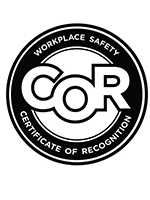Posted: Apr 1 '23

If your job involves working in a confined space, it's paramount to ensure there's a control program in place to mitigate the risks. There should also be established rescue procedures and emergency arrangements should something go wrong.
More than two million workers enter confined spaces annually, out of whom over 100 succumb to accidents. Investigations on the reported incidents indicate that only 15% of the affected people have the required safety training. For this reason, taking a confined space rescue safety training course is crucial to a worker’s safety. Contact us to learn more about group bookings.
What Is a Confined Space
A confined space is an enclosed area not designed for continuous occupancy but large enough for people to get in and perform certain jobs. Ideally, the space presents risks to the workers due to its location/atmosphere, activities carried out, or other safety hazards therein.
The confined space could be below or above ground, but the means of entering or exiting is limited or restricted, which complicates evacuation and rescue efforts in case of an emergency. This is why workers in these situations must take a confined space rescue safety training course.
Characteristics of a Confined Space
A confined space may be an enclosed space (small or large, but not every enclosed space meets the criteria. For instance, if you work in a tiny cubicle with only room for your desk and chair, though it may restrict movements, it does not qualify as a confined space since it's designed for continuous occupancy.
To help you understand what meets the guidelines for a confined space, here are some defining characteristics.
Examples of a Confined Space
Numerous workspaces fall under the confined space classification. Here are some common examples:
Risks of Working in Confined Spaces
Working in a confined space predisposes a worker to tremendous risks. Possible hazards include:
Besides obvious and controllable risks, working in a confined space can also introduce hazards that weren't present. This is why it's crucial to have alternative communication and rescue arrangements should an unanticipated hazardous situation occur.
Guidelines for Working in Confined Spaces
Occupational Safety and Health Administration (OSHA) has laid out safety guidelines that should be followed while working in confined spaces. Every confined space should have a risk control program and emergency arrangements. Similarly, as a worker conducting duties in a confined space, you should know your rights, which are not limited to:
Essentially, you should ascertain the space has been tested for potential hazards such as poor air quality, fire, explosions, flooding, etc. In addition, you should know how to enter the space safely and exit quickly should a potentially hazardous situation arise.
Don’t Take Chances. Enroll in a Confined Space Rescue Safety Training Course Today and Protect Yourself
If your work involves entering a confined space, it's essential to prioritize your safety by familiarizing yourself with the potential risks and learning how to use emergency safety equipment should something happen. As past research shows, most people involved in confined space accidents never have the necessary training. That's why the importance of undertaking a confined space rescue safety training course cannot be overemphasized. Take advantage of our group booking package today and equip yourself and your team with the necessary knowledge to work safely.






